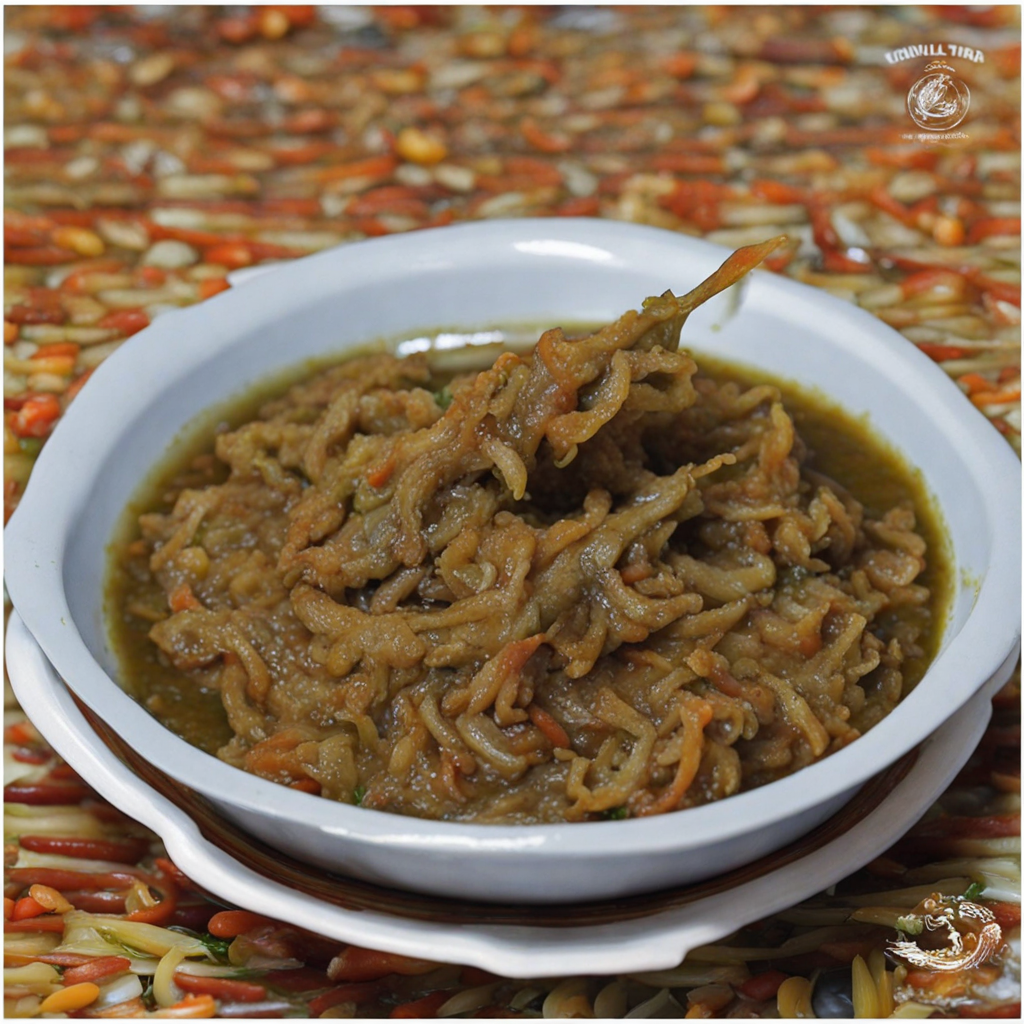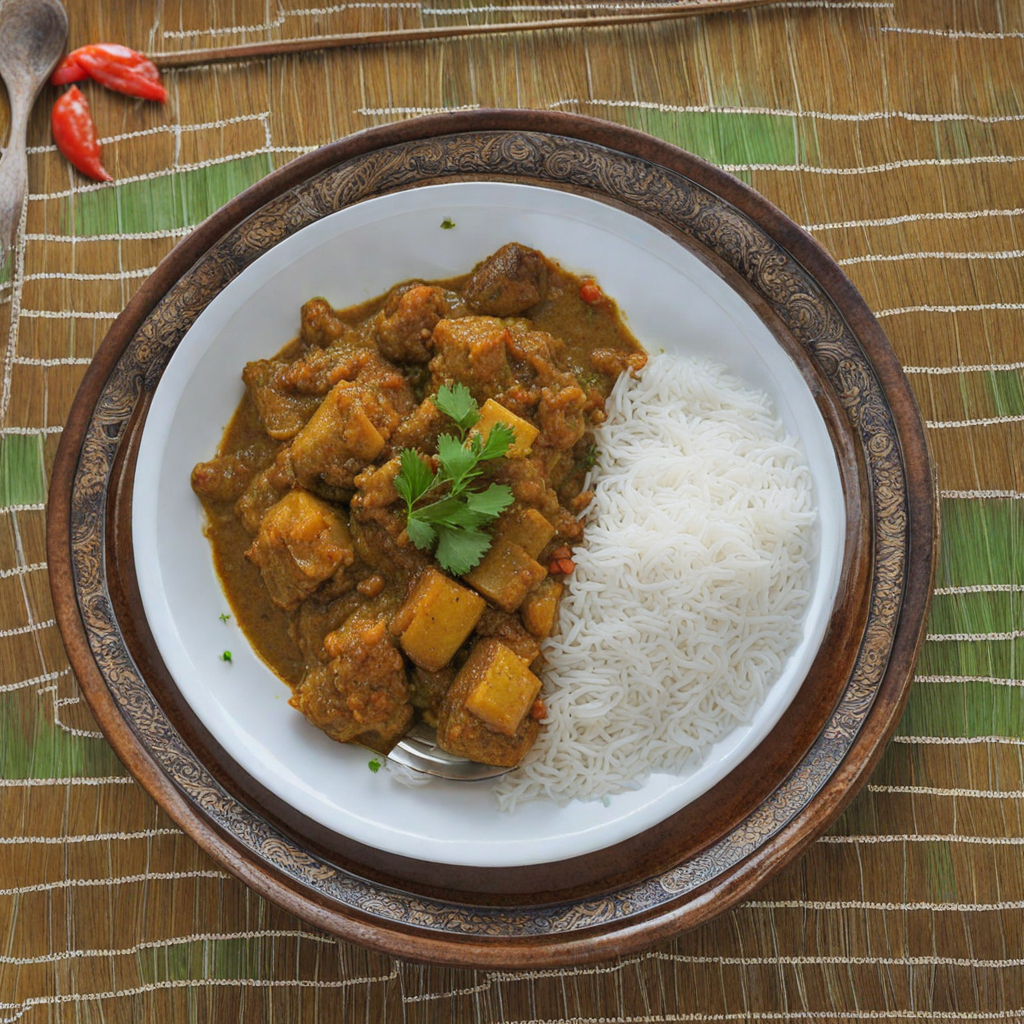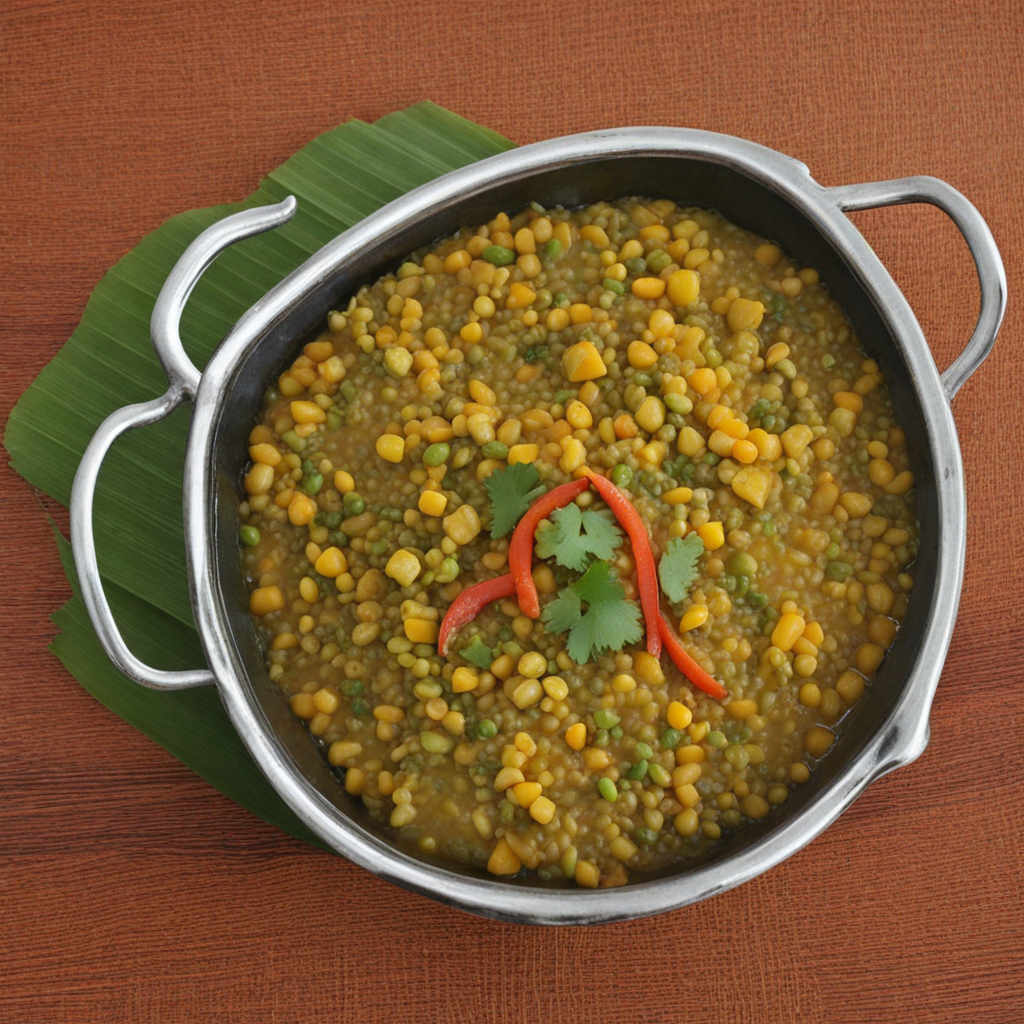Budu
Budu is a traditional sauce hailing from Timor-Leste, characterized by its rich, complex flavors that tantalize the taste buds. Made primarily from fermented fish, Budu offers a unique umami profile that is both savory and slightly tangy. The fermentation process not only enhances the depth of flavor but also contributes to a distinctive aroma that can be both intriguing and appetizing. Typically, it incorporates local ingredients such as garlic, chili, and sometimes lime, which add layers of spice and acidity, balancing the fishiness of the sauce beautifully. Often enjoyed as a condiment, Budu is versatile and can be paired with a variety of dishes. It is commonly drizzled over grilled meats, seafood, or even vegetables, elevating the taste experience with its bold character. The sauce is often used in traditional meals, making it a staple in the kitchens of Timor-Leste, where communal eating and sharing food is a cherished custom. Each family may have its own variation, with some recipes incorporating additional herbs and spices that reflect regional preferences and ingredients. For those adventurous enough to try Budu, it offers a gateway into the culinary heritage of Timor-Leste. The sauce encapsulates the essence of local flavors and practices, making it a true representation of the country’s gastronomic identity. Whether you’re drizzling it over a fresh seafood dish or using it as a dip for grilled meats, Budu promises to introduce your palate to a world of new tastes, illustrating how simple ingredients can come together to create something extraordinarily flavorful.
How It Became This Dish
Budu: The Flavorful Essence of Timor-Leste Budu, a beloved traditional condiment from Timor-Leste, embodies the rich cultural tapestry and culinary heritage of this Southeast Asian nation. With its origins steeped in local customs and communal practices, Budu has not only served as a staple in the Timorese diet but has also evolved into a symbol of national identity and resilience. #### Origins and Ingredients The roots of Budu can be traced back to the indigenous communities of Timor-Leste, an island nation that has been shaped by various influences throughout its history—ranging from indigenous traditions to Portuguese colonialism and the impact of neighboring Indonesia. While the exact timeline of Budu's creation is difficult to pinpoint, its utilization of local ingredients suggests a deep connection to the land and its resources. At its core, Budu is a simple yet flavorful blend of fermented fish, typically anchovies, with an array of spices, herbs, and sometimes coconut. The process begins with the fish being salted and left to ferment, which can take several days to achieve the desired depth of flavor. Once fermented, the fish is combined with ingredients such as garlic, chili, and lime juice, creating a tangy, savory condiment that enhances the flavor of various dishes. The choice of ingredients reflects the natural bounty of Timor-Leste. The country's geographical diversity—from its coastal areas to its mountainous interiors—provides an abundance of seafood, vegetables, and fruits that contribute to the culinary landscape. Moreover, the preservation techniques employed by the Timorese people, such as fermentation, have been passed down through generations, showcasing a respectful relationship with their environment. #### Cultural Significance Budu is more than just a condiment; it is an integral part of Timorese culture and identity. Its preparation and consumption are steeped in social customs that bring families and communities together. Traditionally, Budu is served alongside rice, grilled meats, and various vegetable dishes, elevating the meal with its robust flavor. It is often enjoyed during communal gatherings, celebrations, and rituals, signifying hospitality and shared heritage. The condiment is particularly significant during major festivities. For example, during the celebration of the Timorese New Year, it is customary to prepare traditional foods accompanied by Budu, symbolizing the importance of sustaining cultural traditions amidst the winds of change. The act of making Budu can also serve as a communal activity, with families coming together to prepare the fish and spices, forging bonds and passing down culinary knowledge. Moreover, Budu reflects the resilience of the Timorese people. Throughout its history, Timor-Leste has faced challenges, including colonial rule, conflict, and economic hardships. In the face of adversity, the preservation of culinary traditions like Budu has remained a testament to the nation's spirit. The act of making and sharing Budu has become a way of reclaiming cultural identity, particularly following the struggle for independence in the late 20th century. #### Development Over Time As Timor-Leste has evolved, so has the preparation and perception of Budu. Post-independence, there has been a renewed interest in traditional foods, with efforts to revive and promote local cuisine as a source of national pride. Chefs and home cooks alike are experimenting with Budu, incorporating it into contemporary dishes while still honoring its traditional roots. In recent years, Budu has garnered attention beyond its local context. As global interest in diverse cuisines grows, Timorese food, including Budu, is being featured in culinary festivals and international restaurants, introducing the unique flavors of Timor-Leste to a broader audience. This exposure has led to a renaissance of traditional dishes, with Budu at the forefront, showcasing its versatility and depth. Additionally, the rise of sustainable food practices and farm-to-table movements has resonated with the principles behind Budu's preparation. The use of local ingredients and traditional methods aligns with contemporary values that prioritize environmental sustainability and cultural preservation. This synergy between tradition and modernity has allowed Budu to thrive in a changing culinary landscape. #### Challenges and Future Prospects Despite its rich history and cultural significance, Budu faces challenges that could impact its future. The increasing globalization of food culture has led to a homogenization of flavors, which can overshadow traditional dishes. Furthermore, urbanization and changing lifestyles have altered the ways in which food is prepared and consumed, potentially putting traditional food practices at risk. To combat these challenges, there is a growing movement among Timorese chefs and food enthusiasts to preserve and promote Budu and other traditional dishes. Culinary workshops, festivals, and educational initiatives aim to raise awareness about the importance of local cuisine, encouraging younger generations to embrace their culinary heritage. Efforts are being made to document traditional recipes and practices, ensuring that the knowledge surrounding Budu is not lost to time. The future of Budu also lies in its adaptability. As more people recognize the importance of local and sustainable foods, Budu can find new relevance in contemporary culinary scenes. Chefs are beginning to incorporate Budu into fusion dishes, pairing it with global cuisines while maintaining its essence. This adaptability not only keeps the tradition alive but also showcases Budu's potential to evolve within a modern context. #### Conclusion Budu is more than just a condiment in Timor-Leste; it is a narrative of culture, identity, and resilience. From its origins rooted in local ingredients and communal practices to its significance in traditional celebrations, Budu has woven itself into the fabric of Timorese life. As it continues to develop and adapt in a changing world, Budu serves as a delicious reminder of the richness of Timor-Leste’s culinary heritage, inviting people to explore the flavors and stories of this vibrant nation. Through Budu, we can taste not only the essence of Timor-Leste but also the enduring spirit of its people.
You may like
Discover local flavors from Timor-leste







